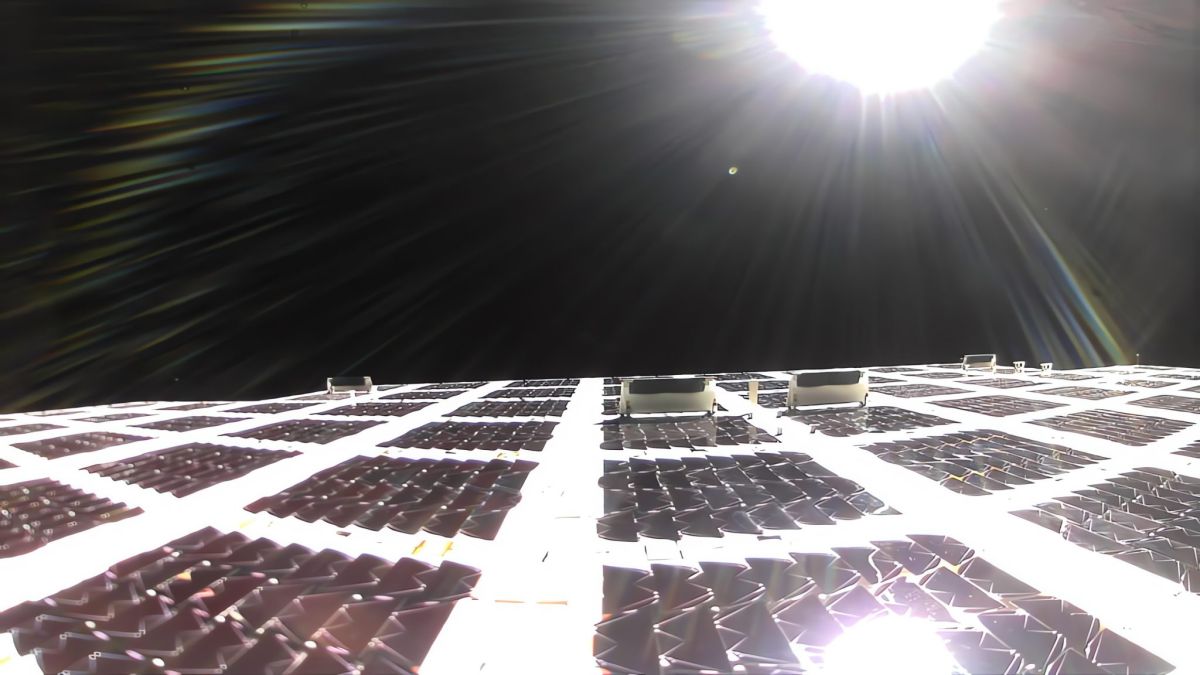
A record-breaking communication array just unfurled in space.
AST SpaceMobile announced on Monday (Nov. 14) that its prototype BlueWalker 3 satellite had deployed its array. The milestone comes about two months after BlueWalker 3 launched to orbit atop a SpaceX Falcon 9 rocket, along with a set of SpaceX’s Starlink internet satellites.
AST SpaceMobile bills BlueWalker 3’s gear as the largest commercial communications array ever deployed in low Earth orbit; its area is 693 square feet (64 square meters), or roughly the size of a small apartment.
Related: SpaceX and OneWeb tell FCC their broadband megaconstellations can coexist
That large size is needed to test the space-based cellular broadband service that AST SpaceMobile wants to deliver. The company is engaged in an ongoing race for direct-to-cellphone service that also involves SpaceX, OneWeb and Amazon, to name a few of the more prominent examples.
“Every person should have the right to access cellular broadband, regardless of where they live or work. Our goal is to close the connectivity gaps that negatively impact billions of lives around the world,” Abel Avellan, chair and CEO of AST SpaceMobile, said in a statement (opens in new tab) on Monday (Nov. 14). The company was not immediately available for comment on the deployment success, when asked by Space.com.
BlueWalker 3 is a pathfinder for AST SpaceMobile’s planned “Bluebird” satellites, which will use similarly large arrays to interface with mobile phones directly. Some astronomers have said the size of each array could contribute to light pollution issues in orbit — concerns that have also been voiced about megaconstellations such as SpaceX’s Starlink, which consists of more than 3,200 spacecraft and continues to grow. (In 2020, NASA raised concerns that AST SpaceMobile satellites could add to the ever-growing risk of collisions in orbit, too.)
More than 100 Bluebird satellites are expected to be aloft by 2024. Astronomers with the Vera Rubin Observatory and the International Astronomical Union have been among those raising alarms about the constellation’s potential effect on dark sky observing, Sky&Telescope reported (opens in new tab) in September. New Scientist (opens in new tab) added that the BlueWalker 3 test satellite could even outshine the brightest planet (Venus) in Earth’s night sky. (AST SpaceMobile’s perspective on the matter was not quoted in either article.)
In the hours after its deployment, BlueWalker 3 was easily spotted in a set of Portuguese meteor cameras, one astronomer reported on Twitter, and other scientists have been chiming in with their own concerns.
Related: Challenge for astronomy: Megaconstellations becoming the new light pollution
BlueWalker 3 is bright enough to be picked up by regular meteor cameras. Here it is viewed from Portuguese #globalmeteornetwork station PT0002 (the bright streak near the center, this is a 10 second max-pixel image). pic.twitter.com/VVLtYbxOvINovember 12, 2022
Why #BlueWalker3 by @AST_SpaceMobile is a BAD idea:1 – The radio service they are using has no standing in international law,2 – The use of large bright satellites effects everyone on the planet and limits the use of Earth for astronomy. Not investment advice, common sense. pic.twitter.com/jptDbg1Z5SNovember 12, 2022
Delays aside, @AST_SpaceMobile’s prototype satellite launch window is open. Once launched, the object may be *very* bright in the twilight sky. Its brightness should be measured as soon as possible after launch.https://t.co/cVoFp18aQQAugust 17, 2022
In the next few months, AST SpaceMobile will begin a test program across six continents with several network operators (such as Vodafone), provided it continues to secure the necessary regulatory approvals, company representatives said in the release.
Other mobile network operators in the program include, but are not limited to, Rakuten Mobile, AT&T, Bell Canada, Telecom Argentina, Africell, Liberty Latin America and Orange, spanning a potential 1.8 billion existing subscribers, AST SpaceMobile added.
Other companies are hopping on board the cellular space trend, with Lynk planning to test an experimental 5G cellular base station as soon as December, if earlier predictions from October come to fruition. Lynk has an approved plan from the U.S. Federal Communications Commission (FCC) to test this out. Its largest competitor, SpaceX, has an agreement in principle with T-Mobile that was announced this summer, despite not having yet secured FCC approval.
Elizabeth Howell is the co-author of “Why Am I Taller (opens in new tab)?” (ECW Press, 2022; with Canadian astronaut Dave Williams), a book about space medicine. Follow her on Twitter @howellspace (opens in new tab). Follow us on Twitter @Spacedotcom (opens in new tab) or Facebook (opens in new tab).



